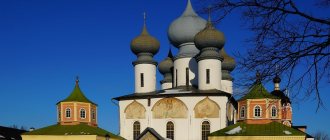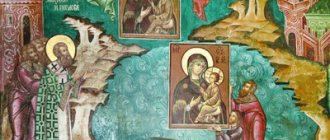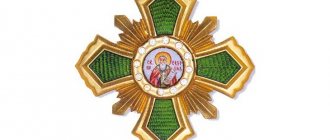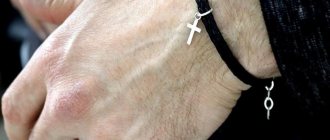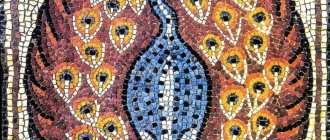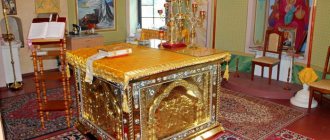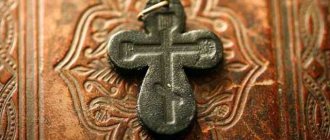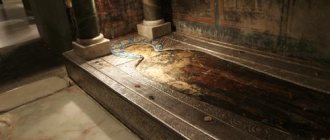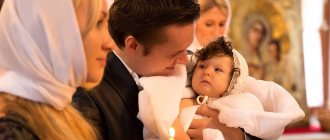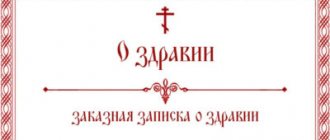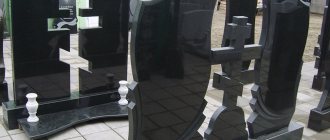A cross with the image of the crucified Jesus Christ is usually called a crucifix for short. In this case, a tetrahedral, hexagonal, or octagonal cross is equally called a crucifix, regardless of the angle of inclination of the lower crossbar. In addition to the body of the Son of God, various kinds of inscriptions and abbreviations can be seen on the religious monument. In most cases, believers cannot decipher these abbreviations on their own. In order not to leave readers in the dark, we will provide a transcript of the most frequently used expressions.
What is the Calvary Cross?
The Calvary cross is one of the oldest designs of the cross. ... The cross depicts the cross itself on which Christ was crucified, Mount Golgotha on which the execution took place, the Head of Adam - a skull located in a cave inside the mountain, instruments of execution, as well as inscriptions that explain the picture of the crucifixion.
Interesting materials:
How much can be deducted from wages under a writ of execution? How much can be withheld from wages under a court order? How much can you deduct from your salary? How much is deducted from your salary? How much is paid to the Pension Fund from wages in Ukraine? How long can an employer withhold wages by law? How much percent can be deducted from salary? What percentage of salary is child support for two children? What percentage of salary is alimony in Kazakhstan? What percentage of salary is maternity leave?
Christian symbolism
Until the 6th century AD. e. A schematic image of a fish was considered a symbol of Christianity. This sign was an allusion to “fishers of souls” - preachers of the Word of God. Only later, when the Teaching materialized in the Gospels and the Bible, with the increase in Christian denominations, believers began to indicate their belonging to the Church of Christ through the cross and crucifixion. It is noteworthy that in some countries several Christian denominations coexist. Thus, in Ukraine there are at least three Orthodox churches - the Moscow Patriarchate, the Kyiv Patriarchate, the Ukrainian Autocephalous - as well as a number of smaller entities.
The tetrahedral cross is considered to be Catholic, while the hexagonal (with a lower or upper crossbar) and octagonal cross are considered Orthodox symbols. It was on the top short crossbar, at the behest of Pontius Pilate, that not the sins of Jesus were written, but the letters INRI - IESVS NAZARENVS REX IVDÆORVM. In Old Slavonic it will be the abbreviation ІНЦІ or НИЦИ - Jesus of Nazareth, King of the Jews. The words “Save and Preserve” are usually written on the back of the bar.
What shape can a pectoral cross have?
The shape of a pectoral cross can be almost any (eight-, six-, four-pointed). According to the Monk Theodore the Studite, “ the cross of every form is the true cross
" In different countries, in different historical periods, there were different ideas about what a pectoral cross should be. For example, in the 17th century in Rus' crosses without a crucifix were more often used - this tradition was preserved by the Old Believers, who now forbid their followers to wear a cross with a crucifix. But in both the 10th and 19th centuries, crosses with the image of the Crucified Savior were widespread.
There are many artistic interpretations of the shape of the cross: keeled, trefoil, flourished cross. An entire science is devoted to their consideration - staurography. Each form has its own history and symbolism.
What is the difference between an Orthodox and a Christian?
The name Christian is very honorable for a person. For it means that the latter is not only a follower of Jesus Christ, but is also in a mystical, mysterious union with Him. Therefore, the Holy Scripture especially emphasizes when, after the preaching of the apostles, believers first began to be called this way:
“And the disciples in Antioch for the first time began to be called Christians” (Acts 11: 26), - emphasizing the last word even with a capital letter!
That's how big this name is! But who in our time bears this name?! After all, there are a lot of Christian denominations:
- Orthodox,
- Catholics;
- Protestants
There are also sectarians who are lost in their views:
- Baptists;
- Pentecostals;
- Jehovah witnesses;
- many others.
But, note... none of them in their own name calls themselves a Christian.
Nobody? No, that's not entirely true. If we look closely at these names of different faiths, then, knowing the laws of the Russian language, we will notice that all of them, except one, are nouns. And only one of them is an adjective - the word “Orthodox”. And if a noun exists on its own, then the adjective must be attached to something, to some other word.
We don’t just say “green,” but we clarify: “green forest; green fence; green pencil”, etc. Likewise, the adjective “Orthodox” necessarily presupposes a clarification – “Christian”. We usually do not use this phrase in full - the Russian language has a peculiarity: to shorten the word when talking about things that go without saying. But the word Christ is the most precious for us.
From here, with all linguistic necessity, it follows that, firstly, the name Orthodox itself also implies the honorary name Christian. And, secondly, it turns out that the Orthodox call themselves Christians, in contrast to other confessions, which bear names that do not contain this honorable name.
What does the word "churched" mean?
This term means, so to speak, the gradual entry of a Christian into the Church. Previously, this was called and was the announcement of a person in the truths of Christianity before baptism.
Now, due to atheism, churching, as a rule, means introducing someone who was baptized in childhood to the same truths (dogmatic, canonical, liturgical, ritual, etc.) in Sunday school, at catechetical courses, or directly in temple. Very often, such churching occurs already in a mature, conscious age of a person, after being in atheism.
It will be good if our churchgoers themselves are well acquainted with those Christian truths in which they are taught to proclaim to others. Let us pray that the Lord will enlighten our shepherds and make them good and competent mentors.
Elder Nikolai Guryanov. (May 24, 1909, village of Chudskie Zahody, St. Petersburg province - August 24, 2002, Ostrov-Zalit, Pskov region). Archpriest. One of the most revered elders of the Russian Orthodox Church of the late 20th - early 21st centuries. Poet
Why do the Orthodox need repentance?
It is necessary in order to cleanse ourselves of those sins that we still commit. Of course, a Christian strives not to sin, but we are spiritually weak, and therefore we do not notice how we fall into certain sins. Therefore, we need repentance, which cleanses and eradicates these sins.
Some foolish people, especially among atheists, have come up with such a syllogism. Like, “if you don’t sin, you won’t repent; If you do not repent, you will not be saved, therefore, in order to be saved you must sin.”
As a priest who preaches in various audiences, I have had to deal with this syllogism more than once. In response to this, I usually ask the questioner:
— Do you wash in a bathhouse, under a shower or take a bath?
For some reason, young girls are embarrassed, but still, blushing a little, they reveal their “terrible secret” - yes, we are washing.
Then the next question:
- Why are you doing this? After all, if you don’t get dirty, you won’t wash yourself. If you don’t wash, you won’t be clean, so does that mean you have to get dirty on purpose in order to be clean?
The logic here is the same as in that atheistic syllogism. What's the catch here?
And the fact is that a person does not need to get dirty on purpose in order to be dirty. Usually it happens: we sweat, dirt sticks to the sweaty body, dust settles... The day passes - and it’s time to wash.
So is the human soul. She doesn’t want to sin at all, but... she accidentally looked where she shouldn’t; said something wrong; did something wrong... And not one day passes, but several or a week, and we believers already need to run to confession in church in order to repent there, at least for these everyday sins. Not to mention the fact that due to the action of the devil, the temptations of the world and the weakness of our sinful flesh, there are much more serious falls. All the more necessary to wash them with repentance!
Additional symbolism
As additional symbols on the crucifix you can see the following:
A semicircle at the foot of the cross, sometimes designated by the letters "GG". He identifies Mount Golgotha, as evidenced by the abbreviation. Here you can often see a skull with two crossed tibia bones. Symbolically it means Death accepted on the cross. But there is another explanation for these sacred symbols. Since it is on Golgotha that the remains of the first people - Adam and Eve - rest, the flowing blood from the wounds of Christ washes away their original sin and cleanses all humanity from it. The inscription “HA” next to the bone remains means “Head of Adam”.
Two diagonal lines diverging from the base of the cross. Symbolically, they mean the spear with which the Roman warrior Longinus inflicted a wound in the chest of the martyr hanging on the cross, but did not reach his heart, and the staff on which Jesus leaned while carrying a heavy burden (the crossbar from the cross) to Golgotha. On both sides of these diagonal lines you can sometimes read the letters “K” and “T” - the first letters in the name of the passionate weapons - spears and canes.
The bottom crossbar is usually beveled. According to the Gospels, two thieves died on Calvary along with Christ. During his lifetime, one of them believed in the Savior and repented of his sins. The second one spoke disparagingly about Jesus. Therefore, the crossbar raised upward indicates that Dismas, the prudent robber, followed Jesus to Heaven, and Gestas, the mad robber, followed to Hell.
What does the color of the domes of Orthodox churches mean?
Usually it means in honor of whom this or that temple was created.
- The domes of Trinity churches are often green, as are the vestments of churches and clergy on the Feast of the Holy Trinity.
- The domes of churches dedicated to the Mother of God are sky blue, for She is our spiritual sky.
- Black or brown are the colors of monasticism; they are rare and decorate monastery churches.
- Churches dedicated to saints are crowned with silver domes.
- Multicolored - remind the Orthodox of the Heavenly Jerusalem.
- Finally, gold is the most common color; it corresponds to the color of the maturity of a Christian who has achieved holiness; such domes decorate temples and cathedrals dedicated to Jesus Christ or great Church holidays.
Archpriest Georgy Gorodentsev
Tablet from the Holy Cross in Rome: sacred or fake?
Estimated reading time: 5 min.
The discovery of the Life-giving Cross of the Lord took place in 326, when the Byzantine Empress Helen, mother of Equal-to-the-Apostles King Constantine, carried out excavations in Jerusalem at the site of the crucifixion of Christ. To the side of the Cross, a tablet was also discovered on which Pontius Pilate wrote down Christ as the King of the Jews.
Saint Helena took the tablet - the title - and part of the found Cross - nails, thorns from the crown of thorns - as well as the earth from Golgotha with her to Rome.
Today, these shrines are kept in the Basilica of the Precious and Life-Giving Cross of the Lord (Santa Croce in Gerusalemme), erected by Emperor Constantine after the death of his mother. However, scientists still differ in their opinions regarding the authenticity of the title.
We asked Timothy Katnis , historian and head of the Apostle Thomas Pilgrimage Center in Europe , to tell us more about the scientific research of the title and its results.
Photo https://www.romeacrosseurope.com/
Saint Helena placed the relics that she brought with her from the Holy Land in her home chapel, where after her death the temple of Santa Croce in Gerusalemme appears. However, as often happened in the Middle Ages, the shrines repeatedly had to be hidden or moved to other places. Sometimes they were hidden so securely that, for example, in Trier the tunic of the Lord was discovered only when the cathedral was rebuilt. Therefore, it is not surprising that the title was discovered only in 1492. There was a record on it with the seal of Pope Lucius II (who reigned in 1144–1145), confirming the authenticity of the shrine, and in 1496 the title was recognized as authentic by Pope Alexander VI.
The title was first studied in 1995 by historian Maria Luisa Rigato from the Catholic University. She photographed it for the first time and weighed it. She found that the sign was most likely made of walnut; its exact weight is 687 g, length – 25 cm, width – 14 cm, thickness – 2.6 cm. Since the tablet is very ancient, it is affected by fungus, eaten away by beetles and worms.
What was a title? This is a wooden tablet on which the inscription is partially preserved, which each evangelist speaks of, albeit somewhat differently: in one case, “King of the Jews” (Mark 15:26), in the other, “Jesus of Nazareth, King of the Jews” (John 19:19), and so on. On the title today you can quite clearly read the words “Nazarene King” written in Latin and Greek, but the third inscription in Hebrew is practically invisible. Some scholars believe that in fact, there is no Jewish script in these “squiggles”. However, graphic examination proved the opposite.
Photo
In 1998, the German scientist Michael Hesemann conducted a graphic study of the title and came to the conclusion that the font in which the inscriptions were made dates back specifically to the first century AD. Hesemann - as well as a group of paleontological linguists from Israeli universities, Maria-Louise Rigata, the famous papyrologist Carsten Peter Tied and other scientists - confirmed this in an audience with Pope John Paul II.
However, then radiocarbon analysis was carried out, which gave completely different indicators and dated the title no earlier than the 10th century. But it is worth noting that, according to many scientists, radiocarbon analysis is effective only if the artifact being studied is always in one place, without moving anywhere, without being exposed to sunlight, etc. Otherwise, the results will be incorrect - which, most likely, happened with a title that has migrated a lot.
Based on all this, we see how the opinions of the scientific world differ regarding the title. Many of them consider the title to be a fake. Some scholars believe that this title is, of course, the same title that Saint Helena discovered in Jerusalem. And the Catholic Church officially supports this position.
The facts are indeed different, but faith remains faith. Apparently, the Lord arranged it this way that no matter what object of faith we take - even the Gospel texts - we will not give one hundred percent guarantee of its authenticity. Could it be that the title was discovered by Saint Helena along with the Life-Giving Cross? Of course it could. For the simple reason that this shrine is mentioned, like the crown of thorns, like the Honest Life-Giving Cross, by all the evangelists. Moreover, the Apostle John even talks about the bickering between the Jews and Pontius Pilate: “Pilate wrote an inscription and placed it on the cross. It was written “Jesus of Nazareth, King of the Jews.” This inscription was read by many of the Jews, because the place where Jesus was crucified was not far from the city, and it was written in Hebrew, Greek, and Roman. The high priests of the Jews said to Pilate: “Do not write: King of the Jews, but what He said: I am the King of the Jews.” Pilate answered: “What I wrote, I wrote” (John 19: 19-22).
Why is this inscription so important to evangelists? Because thanks to her, the involuntary confession of Christ as King took place. Even despite the fact that Jesus Christ was slandered and condemned, the Truth of God thus showed that the King was crucified after all. And all the instruments of death - a cross, a nail, a spear, a crown of thorns, a tablet with an inscription - become not an instrument of shameful and terrible execution, but a symbol of the victory of life over death. This was also important for Saint Helena.
Basilica of Santa Croce in Gerusalemme, photo https://ru.wikipedia.org
Crucifixion is a type of punishment to which prisoners who did not have Roman citizenship were subjected: escaped slaves, people who committed criminal offenses - and in the Jewish tradition this execution was not only terrible, but also humiliating. After the body was removed, the crosses and everything connected with them were buried in the ground. Therefore, it is not surprising that at the Cross, Equal-to-the-Apostles Helen also discovered the table mentioned by the evangelists.
Icons on pectoral crosses
There are crosses on which, in addition to the Crucified Christ, you can see images of saints - both those who were historically present at the Crucifixion and those who lived in completely different eras.
Often on crosses they depict the Most Holy Theotokos and the Apostle John the Theologian standing mournfully at the Crucifixion, as was the case historically.
Nearby there may be an image of St. Longinus the Centurion, a warrior who, while participating on duty in the Crucifixion, was amazed by the spiritual greatness of Christ and the miracles that happened, believed, and then accepted the crown of martyrdom, as well as the faithful disciples of the Savior - the holy Myrrh-Bearing Women.
Angels are often depicted at the top of the cross or on the sides: The heavenly powers contemplated the terrible sacrament of Redemption with fear and sorrow. On the crosses there are both full or half-figures of angels in their anthropomorphic form, as well as images of six-winged cherubs.
The top of the cross can also depict the Holy Trinity. This is a reminder of the Eternal Council, when the Father, Son and Holy Spirit, even before the creation of the world and, accordingly, people, foreseeing the fall of Adam and Eve, decided to save humanity by the coming and suffering of Christ.
On the reverse side of the cross there may be icons of any saints or angels, images of events from Sacred history. Of particular importance is the image of the Resurrection of Christ, the threshold of which was the Crucifixion.
According to the Bible, when was Christ crucified?
It is generally accepted that Jesus Christ was crucified on Friday, and He rose again early in the morning on the first day of the Jewish week, now Sunday. There are two nights between Friday and Sunday, that is, one night is missing.
Interesting materials:
How to find the area of a right triangle grade 3? How to find population density example? How to find a parrot on the street? How to find your most recently saved files? How to find a puncture in an air mattress? How to find the percentage of students? How to find trusted suppliers? How to find hidden wiring under plaster? How to find hidden photos on Xiaomi? How to find hidden followers on Instagram?
Does a baptized Russian mean he is Orthodox?
Baptism in the Orthodox Church truly makes a person an Orthodox Christian. But... what happens next depends on him, on his freedom and will - whether he wants to remain in saving Christianity, or, like the prodigal son, he will go “to the far side,” most often into the destructive jungle of atheism or into another religion.
As for the statement: “Russian means Orthodox” - it is wrong.
- Not every Russian is Orthodox. There are Russians by nationality who profess other religions or are atheists.
- Orthodoxy is practiced by many nationalities: Belarusians, Ukrainians, Gypsies, Moldovans, Armenians, Udmurts and others. They have their own wonderful culture and traditions.
But in Christ “there is neither Greek nor Jew.” The Apostle Paul declares this in his letter to the Galatians and repeats the same thought when later addressing the citizens of Colossae:
...and having put on the new, which is renewed in knowledge after the image of Him who created it,
where there is neither Greek nor Jew, neither circumcision nor uncircumcision, barbarian, Scythian, slave, free, but Christ is all and in all.
(Col. 3:10-11)
